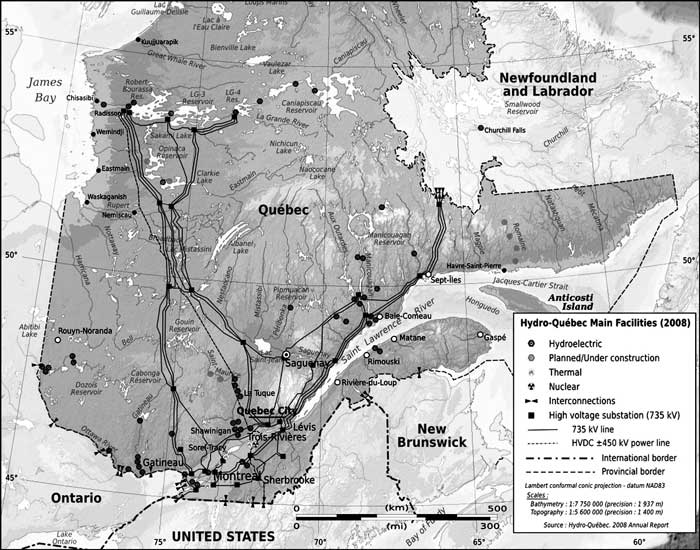
Intro History Geographic and Social Costs Research Document Database
T he advent of hydropower dominating the “clean energy” space has brought about a host of social and environmental tragedies. A simple cursory search on Google illustrates this fact. The costs of large dams and their associated generation and transmission infrastructure have been, and will continue to be, at the expense of the lives of people and the natural world around them. Typically, because of resource locations, indigenous cultures generally bear the brunt of these developments, raising serious questions of environmental justice. Below, we describe simply two examples of the price of hydropower.
On the most extreme end of the spectrum, there is China’s infamous Three Gorges Dam. It is the largest in the world, producing 22.5 GW of energy. The construction of the dam displaced an estimated 1.2 million people, flooded countless cities and villages, decimating fisheries, and eroding hundreds of kilometers of land, to simply name a few problems. The Yangtze River, on which the dam is situated, has been irreversibly changed, killing off additional local economies for those needing it to survive.
Closer to home, there is Hydro-Québec (HQ). The origins of Hydro-Québec run parallel with the boom of damming projects during the Second Industrial Revolution during the late 19th century: the Second Industrial Revolution is a period of technological innovation demarking the standardization of production and manufacturing, allowing for accessibility and globalization. Hydro-Québec is the largest producer of electricity in Canada generating over 45,000 MW. To put that in perspective, that is only around twice as much as the Three Gorges Dam. Taking the Chinese dam’s monstrosity of the scale further, HQ provides 96% of the province’s electricity. The success of their numerous hydroelectric power plants (63 to be exact) allows the corporation to export energy into New England and New York. There are plans, as you read this, for HQ to expand into other northeastern states like Maine.


Throughout their decades of expansion, none were more affected than the James Bay Cree and Inuit. The notorious James Bay Project of the early 70’s saw the flooding of over 11,000 square kilometers of land, diversions of important local rivers, forests incinerated, toxic mercury accumulation in fish, and much more. The flooding killed over 10,000 migrating caribou in what would be considered “one of the worst environmental catastrophes in Quebec history”. Years-long disputes and court battles between the Cree and HQ played out with settlements, renegotiation, expansions, but with the eventual result of its development. The construction, of what would be two hydroelectric power plants, flooded and diverted land and rivers the size of Belgium. To understand what it meant for the Cree to lose the land, read this account by Jamie Pashagumskum on how the construction of the James Bay Project has affected his family and the legacy it leaves behind: Connection to the Land.

The examples above paint a narrow picture of the staggering scale that the world has been changed by harnessing this energy resource. Can you imagine the harm done in South America: Brazil, Venezuela, Columbia, for example? Russia? What about other regions in China? Although we graze the surface of the resulting social and geographic impacts of hydropower projects, we need to delve deeper into the science to understand their lasting effects.
2. https://www.cer-rec.gc.ca/nrg/ntgrtd/mrkt/nrgsstmprfls/qc-eng.html
3. http://www.hydroquebec.com/international/en/exports/markets/
4. http://www.hydroquebec.com/history-electricity-in-quebec/timeline/
5. https://www.researchgate.net/publication/270452774_Vegetation_on_Embankment_Dams_-_a_Growing_Concern_for_Hydro-Quebec
6. https://www.thecanadianencyclopedia.ca/en/article/james-bay-project
7. https://archive.macleans.ca/article/1984/10/15/migration-to-a-watery-death
8. https://www.ucsusa.org/resources/environmental-impacts-hydroelectric-power
9. https://www.internationalrivers.org/economic-impacts-of-dams
10. http://www.thecornerhouse.org.uk/resource/dams-rocks
11. http://arcticcircle.uconn.edu/HistoryCulture/Cree/Feit1/index.html
- Ansar et al. 2014 - Should we build more large dams - the actual costs of hydropower megaproject development ( PDF File 1.41 MB )
- Fikret Berkes - James Bay Cree and Hydro-Quebec ( PDF File 15 KB )
- Hamilton 5-10-91 Daming the Northern Rivers-The Gazette p18 ( PDF File 873 KB )
- Heming and Rees 2000 - Population Displacement in the three gorges reservoir area of the yangtze river ( PDF File 261 KB )
- Padovani 2006 - Displacement from the three gorges region ( PDF File 223 KB )
- Paregol 1998 The Shocking Revelations at Hydro-Quebec- The Environmental and Legal Consequences of the Quebec-NY Powerline ( PDF File 1.2 MB )
- Rosenberg1995 Env and Social Impacts of Large Scale Hydro ( PDF File 2.43 MB )
- Russia- The Impact of Climate Change to 2030. National Intelligence Council 2009 ( PDF File 939 KB )
- Rybinsk Reservoir ( PDF File 354 KB )
- Schiehll and Raufflet 2013 - Hydro Quebec and the crees - the challenges of being accountable to first nations ( PDF File 257 KB )
- Senecal and Egre 2012 - Human impacts of the la grande hydroelectric complex on cree communities in quebec ( PDF File 461 KB )
- Tulsa Law review 1993 NELPI Energy Law Essay_ The Legal Framework for Hy... ( PDF File 2.74 MB )
